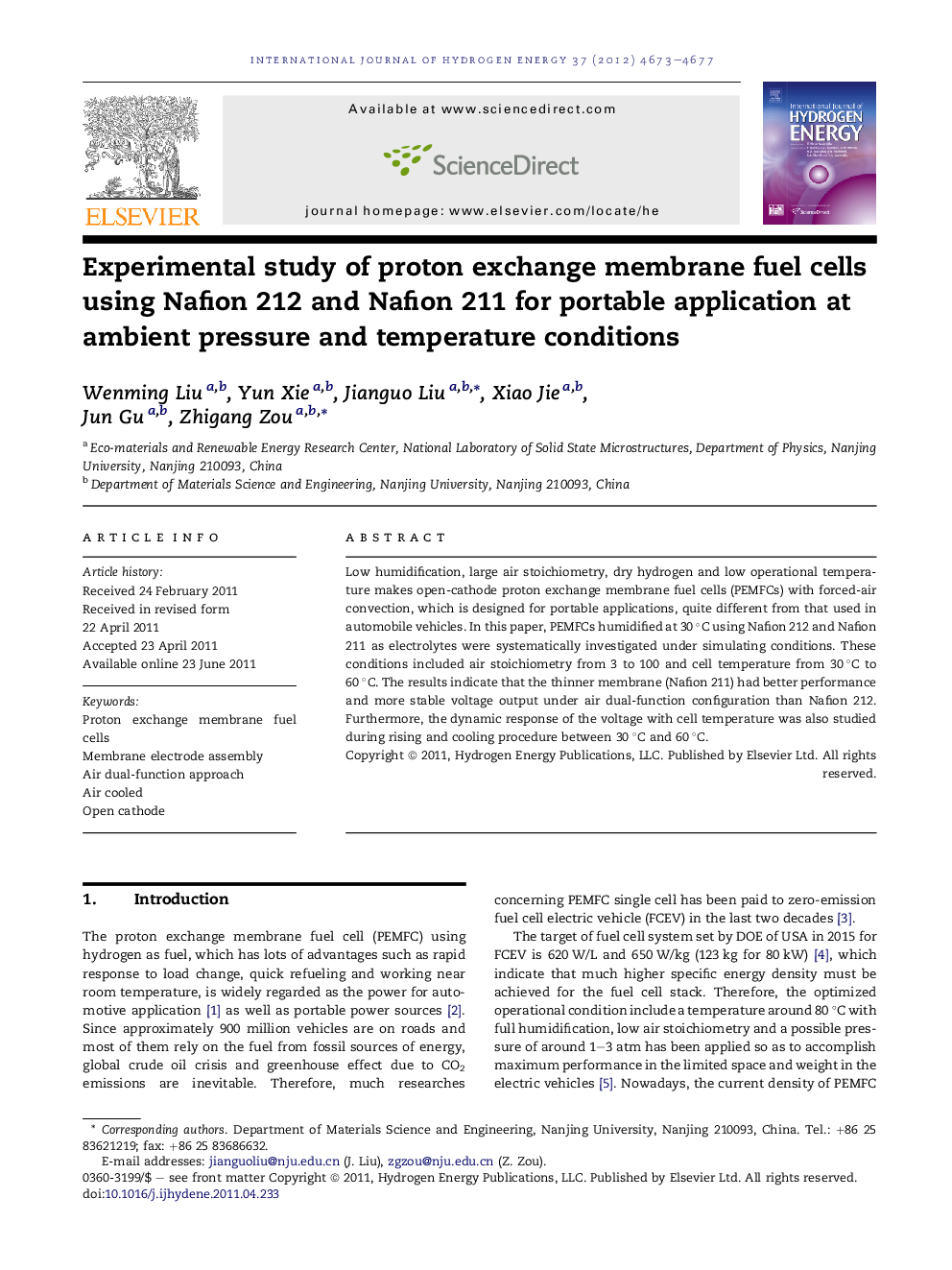| Article ID | Journal | Published Year | Pages | File Type |
|---|---|---|---|---|
| 1275531 | International Journal of Hydrogen Energy | 2012 | 5 Pages |
Low humidification, large air stoichiometry, dry hydrogen and low operational temperature makes open-cathode proton exchange membrane fuel cells (PEMFCs) with forced-air convection, which is designed for portable applications, quite different from that used in automobile vehicles. In this paper, PEMFCs humidified at 30 °C using Nafion 212 and Nafion 211 as electrolytes were systematically investigated under simulating conditions. These conditions included air stoichiometry from 3 to 100 and cell temperature from 30 °C to 60 °C. The results indicate that the thinner membrane (Nafion 211) had better performance and more stable voltage output under air dual-function configuration than Nafion 212. Furthermore, the dynamic response of the voltage with cell temperature was also studied during rising and cooling procedure between 30 °C and 60 °C.
►Evaluation of single cell in a simulated condition of open-cathode stack. ►The conditions include low humidification and temperature and large air stoichiometry. ►The thinner Nafion 211 membrane shows better polarization curves than Nafion 212. ►The voltage variation under dynamic discharging is also smaller for Nafion 211.
